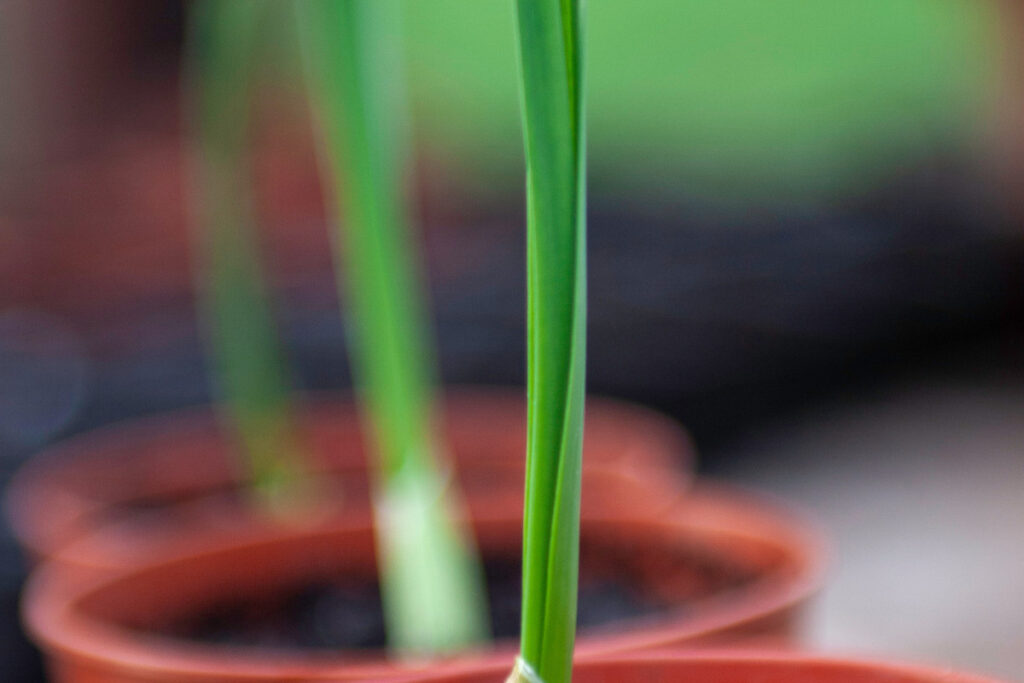Wild-at-heart adventures in early November
As long as well-drained soil is guaranteed, late autumn is a good time to plant garlic. Roots will grow down and leaves develop, ready for take-off when the days lengthen and temperatures rise towards spring. The garlic growing season is finite and the longer plants are in leaf, the bigger the bulbs will be. In my kitchen garden, white rot has made growing onions, shallots and garlic a miserable business. Even before that, our heavy soil remained wet for much of winter and I used to start garlic in pots under unheated glass in January or February, for planting out later. This worked well and we raised good-sized bulbs.
For their usefulness, aroma and benefit to insects, I aim to line our pathways with a wide variety of culinary herbs. To keep them fresh and beautiful, the woodier sorts such as rosemary, sage and thyme are propagated by cuttings and herbaceous perennials are lifted, divided and replanted. This is a job best carried out between autumn and spring but only when the soil is not frozen or wet. I love to find a clump of marjoram that needs rejuvenating, clear an area for replanting and get the job done before the rush of the new growing season.
As well as foraging for food or useful items, the garden is a source of found objects for nature tables (feathers, pine cones, robin’s pincushions) and also flowers or other plant material for cutting. November is usually one of the least lovely months in the garden but I’m always impressed by how much is still out there to fill a vase. I challenge you to forage for cut material from your own gardens. Hopefully you’ll be agreeably surprised, find some unexpected candidates and if not, be inspired to stock up on some late colour.
……………………
How to grow garlic

The origin of garlic is thought to be Central Asia, from upland areas in places with tongue twister names such as Kyrgyzstan, and Uzbekistan. In cultivation since time immemorial, there are now many different cultivars and to succeed it is best to choose one bred to suit our rather un-Mediterranean British climate. Some varieties are more suited to an autumn planting than others. There’s also the decision whether to opt for hardneck or softneck garlic. Hardneck varieties generally deliver stronger flavour from fewer but larger cloves but with the drawbacks of a shorter storage life and a propensity to bolt (produce a flower stem). Softneck garlic rarely bolts, stores really well and makes a tighter bulb of more but smaller cloves. Whichever you choose, make sure soil is well-drained and if in doubt, plant into mounds or raised beds in a sunny position. Garlic does not fare well on acidic soils, so where this could be a problem, choose a bed where lime has been added recently. Then it is simply a case of setting down a line, breaking the bulb into individual cloves and spacing them out 13cm (5in) apart in rows 25-30cm (10-12in) apart, before planting them 2.5cm (1in) deep. Collect any small cloves of under 1cm (1/2 in) diameter and plant these together in a pot under cover to harvest their leaves. Keep the plants weeded and they’ll be ready for lifting in summer after their leaves and stems have yellowed. Let them dry in situ and then collect them up for further drying.
Try these for autumn planting
‘Rose Wight’
A hardneck cultivar originating from Northern Spain, whose white skins are striped with rosy pink. Underneath, the flavoursome cloves are a pinkish-brown. www.marshallsgarden.com
‘Provence Wight’
This softneck garlic is capable of producing impressively large bulbs and although it is best planted in autumn, will also do well from a spring start. www.simplyseed.co.uk
‘Cristo’
A French softneck that has long been a reliable favourite for its white skins and plump, tasty cloves www.rhsplants.co.uk
Garlic step-by-step




………………………
Find more tips, advice and articles like this at the Amateur Gardening website. Subscribe to Amateur Gardening magazine now





